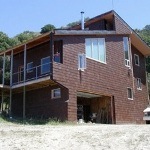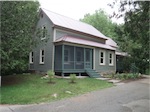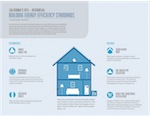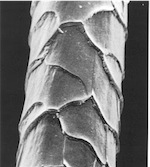Bathrooms are the second most heavily used rooms in the house, with the first being the kitchen. The wear and tear in bathrooms necessitate repair or remodel. As the economy recovers, albeit slowly, bathrooms are the prime targets as more homeowners think about remodeling their homes.
A green bathroom remodel is not necessarily more expensive. It may in fact cost about the same or only marginally more. However, it brings many long-term health and economic benefits.
When planning a green bathroom think improving health, comfort, water conservation, and energy efficiency. It would be great if you can do all the green features. If not, do what is most important to you and your family first.
-
Health – First and foremost, ensure that there is sufficient ventilation to rid moisture. Moisture that stays in a room can cause wood to decay and mold to develop. (See Moisture and Mold). The retained moisture can thus pose health hazard, as it is well known that mold can cause respiratory problems. Opening windows for long enough time works but it is not very practical particularly in winter.
Installing an exhaust fan is a simple and effective solution. Look for Energy Star qualified exhaust fan as they are more energy efficient and use 60% less energy than conventional ones. They are also quieter. Bathrooms in newer homes are required by regulation to be equipped with exhaust fans.
If an exhaust fan exists already, it is still important to check that a) the system is vented outdoor and not to the attic, b) the fan and ducting system have enough capacity, c) the fan operates well, and d) there is no blockage in the duct.
Install a timer switch to let the fan run for 20 minutes after use. In general, keeping the relative humidity inside the house to below 50% can prevent mold growth.
- Comfort – Making the temperature inside the bathroom even will greatly increase comfort. Air seal around the windows to keep cold air out. You don’t want to step out from a hot shower or bath, only to feel air drafting on your back. If you plan to work on the walls and floor, take the opportunity also to air seal all wall, ceiling and floor joints. Add insulation to the attic and the exterior wall if possible.
-
Water Conservation – 26% of household water is literally flushed down the toilet. Use water conserving toilets with the WaterSense label can cut water waste down a lot. Dual flush toilets can be great but choose carefully because some models do not work very well. With the one gallon per flush new toilets on the market, it should be an easy choice.
An on-demand recirculation pump is a great water and energy saving device. You turn the pump on, say, before taking a shower. The pump recirculates cold water back to the hot water system instead of letting it go down the drain. It shuts off when a sensor determines that water is hot enough near the showerhead. So when you step into the shower, hot water is ready. The on-demand recirculation pump is usually installed inside the cabinet under the sink and one pump serves all faucets in one bathroom or sometimes multiple bathrooms.
- Energy Efficiency – Many energy efficiency measures that work for the home apply to bathroom. Change light fixtures and lamps to use CFL or LED lights. CFL saves 75% and LED saves 80% of energy compared to incandescent lights. LED’s are still more expensive than CFL’s but prices are dropping. Also LED’s last 2 to 4 times as long as CFL’s. Either choice can be good. It may come down to personal preference or how they fit with the fixtures.
- Durability – Operating an exhaust fan or opening windows to drive moisture out of the bathroom can prevent mold growth, decay and dry rot. Hence there will be less repair and maintenance.









Great post – I’m at the St Louis Home & Garden Show right now (Feb 21-24, 2013) speaking not only on my Deep Energy Retrofit project (www.thegreenedhouseeffect.com) but also on Green Kitchen & Bath trends.
A couple of things you could add to this: Our showers apparently use nearly 40% of the hot water we use in our homes. Unfortunately, all the energy to heat that water goes down the drain, along with the water. Using a “drain water heat recovery unit,” a good bit of that energy can be recaptured, pre-heating the cold water headed to the water heater.
Think about gray water recovery as well. The water from your shower can be routed into a gray water system and used to irrigate landscaping. An especially good idea if you live in the arid west.
Keep up the good work, and check out my book, The Greened House Effect, available now for pre-order through the Green Remodel Forum store!
And check out my green bathroom in a series of how-to videos on the At Home Channel at http://www.buildipedia.com.
jeff
Thanks for your comments, Jeff. We consider writing more of those in the future. Here is the link to an article http://greenremodelforum.com/grf/?page_id=1416 about “drain water heat recovery” from our hot water expert, Larry Weingarten.